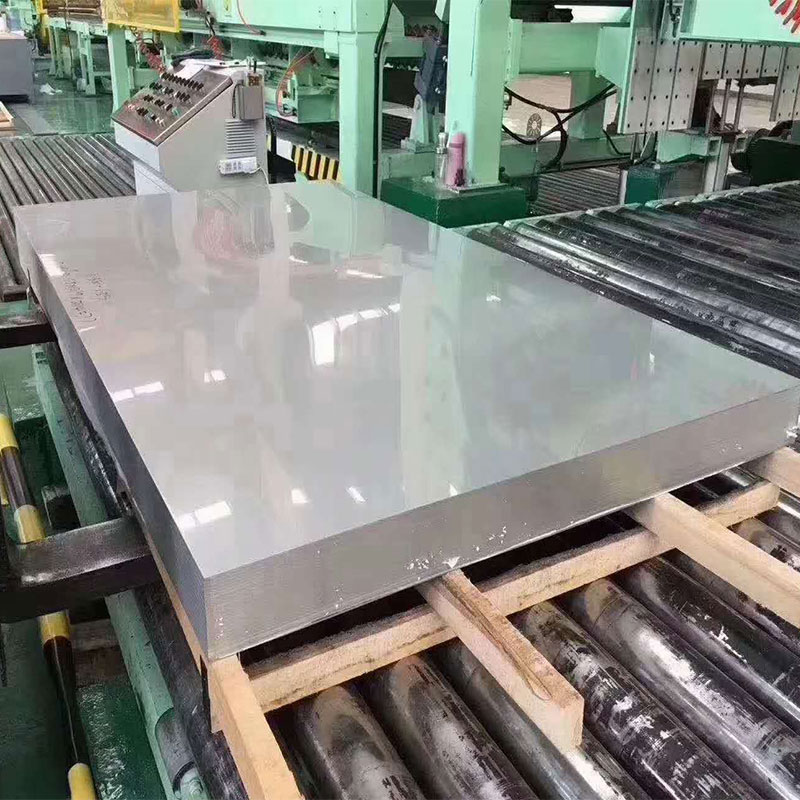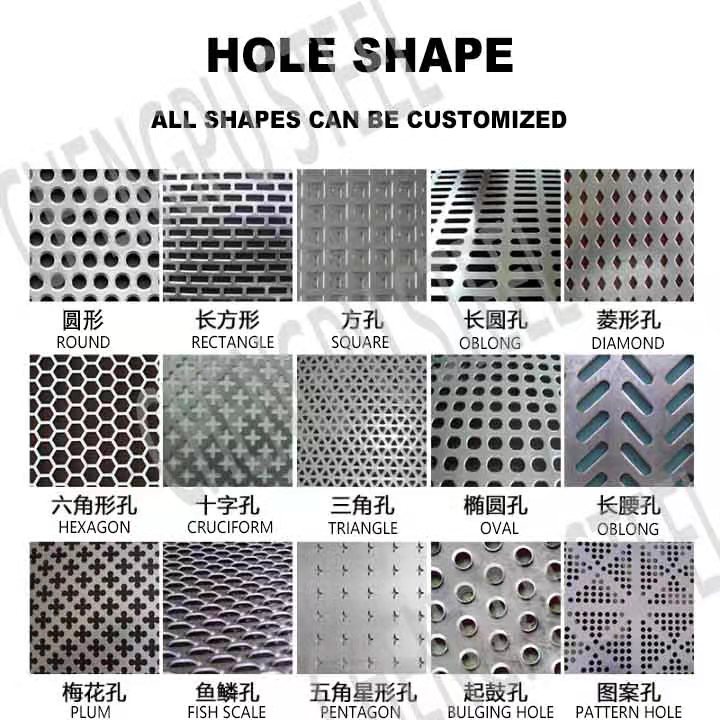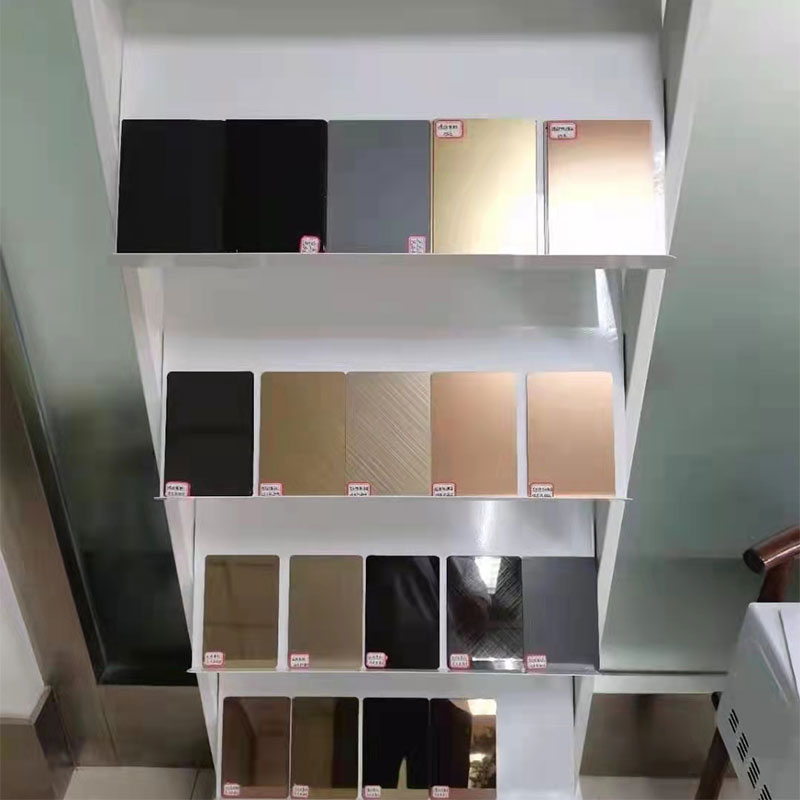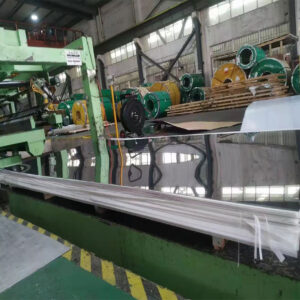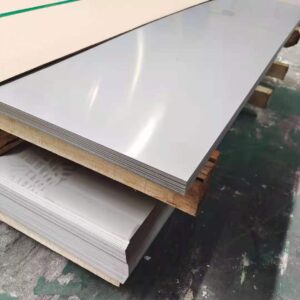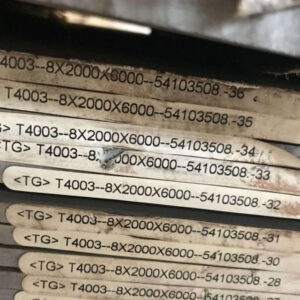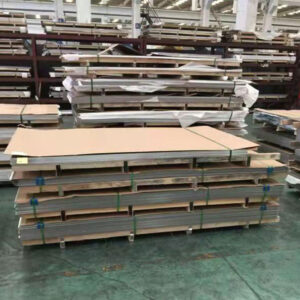Description
304L / 1.4306 Stainless Steel Sheet (L is low carbon)
Performance introduction
As a low-carbon 304 steel, its corrosion resistance is similar to that of 304 under normal conditions, but after welding or stress relief, its resistance to intergranular corrosion is excellent; it can also maintain good resistance without heat treatment Corrosion resistance, use temperature -196℃~800℃.
Scope of application
It is applied to outdoor machines in the chemical, coal, and petroleum industries that require high grain boundary corrosion resistance, heat-resistant parts for building materials, and parts with difficult heat treatment.
As a low-C 304 steel, its corrosion resistance is similar to that of 304 steel under normal conditions, but after welding or stress relief, its resistance to intergranular corrosion is excellent; it can also maintain good resistance without heat treatment Corrosion resistance, use temperature -196℃~800℃.
This grade can use for Household products (category 1, 2 tableware, kitchen cabinets, indoor pipelines, water heaters, boilers, bathtubs), auto parts, medical utensils, building materials chemistry, food industry, marine stainless steel.
Alternative grades of equivalent materials
| China * GB | GB24511 | 022Cr19Ni10 |
| Japan | JIS | SUS304L |
| United States of America | ASTM | 304L |
| UNS | S30403 | |
| South Korea | KS | STS304L |
| European Union | BSEN | 1.4306 |
| India | IS | 02Cr18Ni11 |
| Australia | AS | 304L |
| Taiwan, China | CNS | 304L |
| Germany | DIN | X2CrNi19-11 |
| United Kingdom | BS970 BS1449 | 304S12 |
| Belgium | BS970Part1 | 304S11 |
Do you know the difference between stainless steel 201 and 304?
1. Specifications: There are two types of stainless steel plates commonly used in daily life: 201 type and 304 type, which are actually different in composition. The quality of 304 is better and more rust-proof.
2. 201 is nickel steel, which is an alternative to 301 steel. After cold working, it has magnetism and is used in railway vehicles.
3. 304 is a widely used stainless steel and heat-resistant steel. Used in food production equipment, general chemical equipment, nuclear energy, etc.
4. 201 has high manganese content, the surface is very bright, dark and bright, and high manganese content is easy to rust. 304 contains more chromium, the surface is matte, does not rust, the two are compared together. The important thing is that the corrosion resistance is different. 201 has poor corrosion resistance, so the price is much cheaper. Because 201 contains low nickel, the price is lower than 304, so the corrosion resistance is not as good as 304. Material 201 is high manganese stainless steel, high carbon and low nickel, with higher hardness than 304
5. The difference between 201 and 304 is a nickel problem.
Lowest Temperature (°F) at Which the Corrosion Rate Exceeds 5mpy
| CORROSION ENVIRONMENT |
Type 304 |
Type 316L |
2205 (UNS S32205) |
2507 |
|---|---|---|---|---|
| 0.2% Hydrochloric Acid | >Boiling | >Boiling | >Boiling | >Boiling |
| 1% Hydrochloric Acid | 86p | 86 | 185 | >Boiling |
| 10% Sulfuric Acid | — | 122 | 140 | 167 |
| 60% Sulfuric Acid | — | <54 | <59 | <57 |
| 96% Sulfuric Acid | — | 113 | 77 | 86 |
| 85% Phosphoric Acid | 176 | 203 | 194 | 203 |
| 10% Nitric Acid | >Boiling | >Boiling | >Boiling | >Boiling |
| 65% Niitric Acid | 212 | 212 | 221 | 230 |
| 80% Acetic Acid | 212p | >Boiling | >Boiling | >Boiling |
| 50% Formic Acid | ≤50 | 104 | 194 | 194 |
| 50% Sodium Hydroxide | 185 | 194 | 194 | 230 |
| 83% Phosphoric Acid + 2% Hydrofluoric Acid |
113 | 149 | 122 | 140 |
| 60% Nitric Acid + 2% Hydrocloric Acid |
>140 | >140 | >140 | >140 |
| 50% Acetic Acid + 50% Acetic Anhydride |
>Boiling | 248 | 212 | 230 |
| 1% Hydrochloric Acid + 0.3% Ferric Chloride |
68p | 77p | 113ps | 203ps |
| 10% Sulfuric Acid + 2000ppm Cl- + N2 |
— | 77 | 95 | 122 |
| 10% Sulfuric Acid + 2000ppm Cl- + SO2 |
— | <<59p | <59 | 104 |
| WPA1, High Cl- Content | <<50 | ≤50 | 113 | 203 |
| WPA2, High F- Content | <<50 | ≤50 | 140 | 167 |
ps = pitting can occur
ps = pitting/crevice corrosion can occur
| WPA | P2O5 | CL– | F– | H2SO4 | Fe2O3 | Al2O3 | SiO2 | CaO | MgO |
|---|---|---|---|---|---|---|---|---|---|
| 1 | 54 | 0.20 | 0.50 | 4.0 | 0.30 | 0.20 | 0.10 | 0.20 | 0.70 |
| 2 | 54 | 0.02 | 2.0 | 4.0 | 0.30 | 0.20 | 0.10 | 0.20 | 0.70 |
Chemical Analysis
Weight % (all values are maximum unless a range is otherwise indicated)
| Element | 304 | 304L |
|---|---|---|
| Chromium | 18.0 min.-20.0 max. | 18.0 min.-20.0 max. |
| Nickel | 8.0 min.-10.5 max. | 8.0 min.-12.0 max. |
| Carbon | 0.08 | 0.030 |
| Manganese | 2.00 | 2.00 |
| Phosphorus | 0.045 | 0.045 |
| Sulfer | 0.030 | 0.030 |
| Silicon | 0.75 | 0.75 |
| Nitrogen | 0.10 | 0.10 |
| Iron | Balance | Balance |
Physical Properties
| Density | Thermal Conductivity 212°F (100°C) |
| 0.285 lbs/in3 | 9.4 BTU/hr/ft2/ft/°F |
| 7.90 g/cm3 | 16.3 W/m-°K |
| Specific Heat | Melting Range |
| 0.12 BTU/lb-°F (32 – 212°F) | 25050 – 2590°F |
| 500 J/kg-°K (0 – 100°C) | 1398 – 1421°C |
| Modulus of Elasticity | Electrical Resistivity |
| 29.0 x 106 psi | 29.1 Microhm-in at 68°C |
| 200 GPa | 74 Microhm-cm at 20°C |
Mean Coefficient of Thermal Expansion
| Temperature Range | |||
|---|---|---|---|
| °F | °C | in/in °F | cm/cm °C |
| 68-212 | 20-100 | 9.2 x 10-6 | 16.6 x 10-6 |
| 68-932 | 20-500 | 10.6 x 10-6 | 18.2 x 10-6 |
| 68-1600 | 20-870 | 11.0 x 10-6 | 19.8 x 10-6 |
Mechanical Properties
| ASTM | |||
|---|---|---|---|
| Typical* | Type 304 | Type 304L | |
| 0.2% Offset Yield Strength, ksi | 42 | 30 min. | 25 min. |
| Ultimate Tensile Strength, ksi | 87 | 75 min. | 70 min. |
| Elongation in 2 inches, % | 58 | 40 min. | 40 min. |
| Reduction in Area, % | 70 | — | — |
| Hardness, Rockwell B | 82 | 92 max. | 92 max. |
*0.375 inch plate
Is 304D stainless steel and 304 stainless steel the same product?
No, 304D stainless steel is not 304 stainless steel. There is still a big difference between them.
First of all, the element content of the two is not the same. The chromium and Cr content of 304D reaches 18, while the nickel Ni content only reaches 2.8, and the manganese content reaches 7. Therefore, strictly speaking, 304D stainless steel is not 304 stainless steel. .
304D stainless steel is actually an economical corrosion-resistant stainless steel independently developed by Qingshan to replace stainless steel 304. Its main advantage is that 304D stainless steel improves the strength and hardness of the material, ensures the corrosion resistance of 304 stainless steel, and reduces the material cost, making it more cost-effective than 304 stainless steel.
The 304 stainless steel family derived from 304 has excellent surface processing properties. The surface processing commonly used in the market can be applied to 304 series stainless steel.
1. Dry grinding and wire drawing
The most common ones in the market are filaments and short wires. 304 series stainless steel shows good decorative effects after processing such surfaces, which can meet the requirements of general decorative materials. Generally speaking, 304 series stainless steel can form a good effect after a frosting.
Due to the low cost, simple operation, low processing cost, and wide application of this type of processing equipment, it has become a necessary equipment for processing centers. Therefore, most machining centers can provide frosted boards with filaments and short filaments, of which 304 steel accounts for more than 80%.
2. oil mill drawing
The 304 series stainless steel has a perfect decorative effect after oil grinding, and is widely used on decorative panels such as elevators and home appliances. Cold-rolled 304 series stainless steel can generally achieve good results after one frosting pass. At present, there are some machining centers on the market that can provide oily frosted processing of hot-rolled stainless steel, and its effect is comparable to cold-rolled oil milling.
Oily drawing is also divided into filament and short filament. Elevator decoration generally uses filament, and there are two types of lines such as various small household appliances and kitchen utensils.
3. 8K processing
304 series stainless steel is obviously better than 200 series stainless steel in 8K processing. The cold-rolled surface of 2B is polished by 8K. Generally, a mirror effect can be achieved after one pass of processing. At present, the 8K grinding process with nitric acid and iron oxide red is low in price, and the cost of the value equipment itself is low, so the overall grinding cost is low and has been widely promoted.
4. titanium
The choice of high-end decoration materials has a gorgeous effect. 304 series stainless steel has been used in titanium decoration for a long time, and is widely used in elevators and building decoration materials.
304 series stainless steel is widely used in various decorative materials due to its excellent surface processing performance, and its corrosion resistance is strong. Today, the rapid growth of 200 series and 400 series stainless steels, 304 series stainless steel is still strong in the surface decoration material industry. It firmly occupies a large share and is the first stainless steel for customers.
Contact Us Now!
Our products: stainless steel including all sizes of steel coils, steel sheets, steel pipes, flat steel, angle steel, round steel, channel steel and other metal materials.
If you need product information or price, please fill in your contact information in the form below, we will usually contact you within 12 hours. You can also click on our email address info@shandongtisco.com to send us an email to get prompt reply.
Send me the inquiry,free samples and the most favorable quotation are waiting for you!
Supply Better Material for Project & Find Best Solution for Clients
Wish your business boom and all the best!
